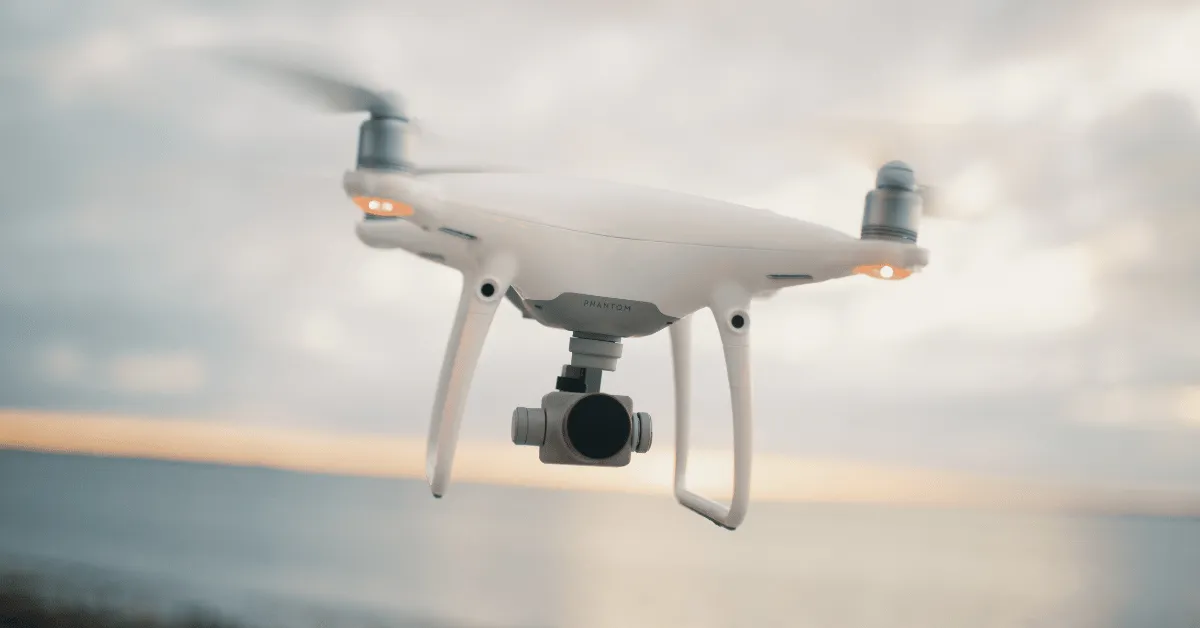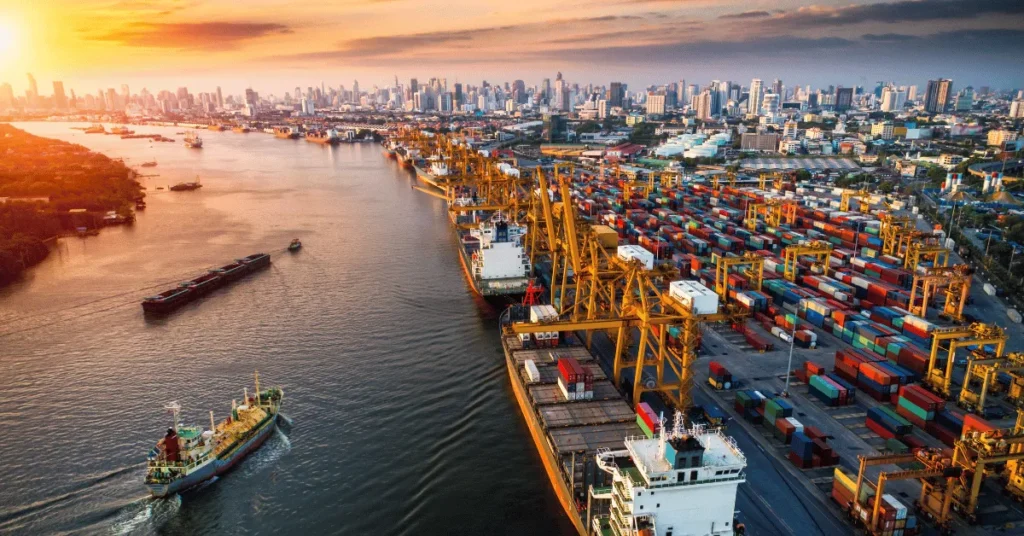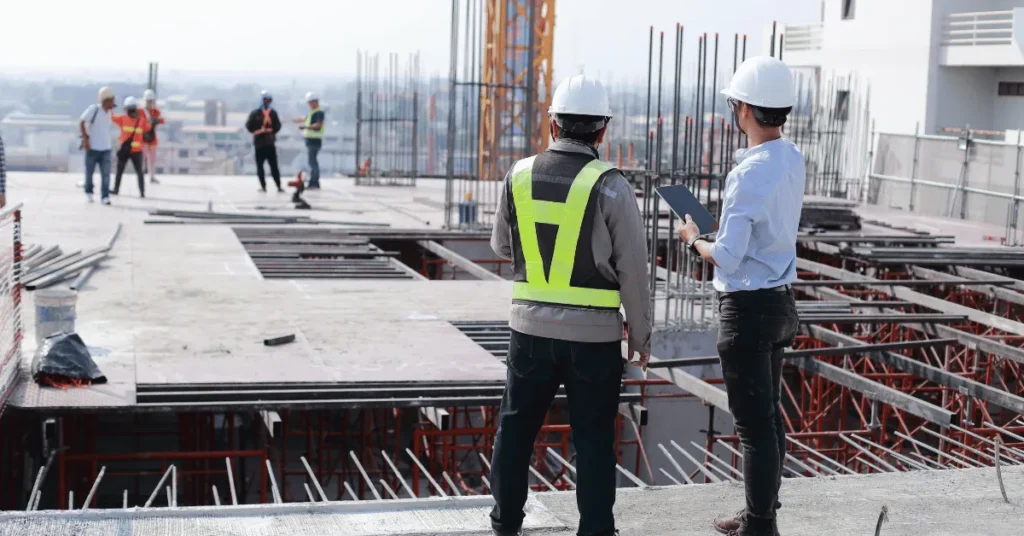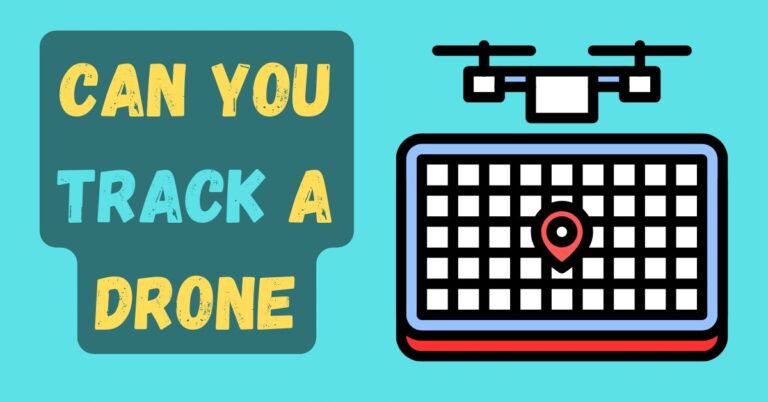Reasons Why Drones Are Good?

Have you ever wondered how a flying machine, no bigger than your hand, could revolutionize entire industries and change how we see the world?
With their soaring capabilities and cutting-edge technology, drones have emerged as game-changers across various sectors.
This article delves into the top reasons why drones are good, from transforming aerial photography to enhancing emergency response.
Let’s discover the incredible possibilities these unmanned marvels bring to our lives.
KEY TAKEAWAYS
- Drones benefit environment through wildlife monitoring and conservation efforts.
- Five advantages: Efficient data collection, safety, cost savings, disaster response.
- Drones offer pros like remote sensing, but consider privacy concerns.
- Disadvantages include airspace regulations, hacking vulnerabilities, and privacy issues.
- Overcome drone problems with maintenance, reliable communication, and collision avoidance.
- Military drones’ advantages: Intelligence, surveillance, precision strikes with reduced risk.
What are the top reasons why drones are good?
In recent times, drones gained popularity due to their versatility.
From capturing stunning aerial photographs to revolutionizing industries, drones offer numerous advantages that make them highly valuable.
Unique Perspective and Aerial Photography:
Drones provide a unique perspective by capturing breathtaking aerial photographs and videos.
With advanced gimbals and HD cameras, drones offer creative possibilities, exploring uncharted territory for photographers and videographers.
It enables professionals and enthusiasts to create stunning visual content that stands out.
Versatile Applications:
Drones have demonstrated their versatility, showcasing a vast array of uses. They are used in filmmaking, real estate, agriculture, construction, and environmental monitoring industries.
Drones equipped with thermal cameras can identify heat leaks in buildings, while multispectral sensors enable precision agriculture for crop monitoring and analysis.
These uses enhance effectiveness, cut expenses, and furnish valuable information for decision-making.

Fun and Thrilling Experience:
Operating a drone offers a fun and exhilarating experience, satisfying the desire to fly and explore the skies.
Drone racing has also gained popularity as an exciting sport, pushing the limits of speed and agility.
Whether you are an enthusiast or a seasoned flyer, the exhilaration of piloting a drone and relishing the liberating sensation of flight is incomparable.
Economic Opportunities:
Drones open up new economic opportunities through various applications. Drone operators can provide aerial photography and videography services, conduct inspections in hard-to-reach areas, and offer mapping and surveying solutions.
The growing demand for drone technology has also created jobs in drone manufacturing, maintenance, and software development.
Community and Skill Development:
The vibrant drone community is passionate, offering a platform for enthusiasts and professionals to connect, share experiences, and enhance their skills.
Online forums, social media groups, and local drone clubs provide valuable resources, knowledge exchange, and networking opportunities. Being part of this community fosters personal growth and continuous learning.
Educational Value:
Drones have significant educational value and are increasingly integrated into academic curricula. Practical STEM learning fosters hands-on experiences in science, tech, engineering, and math.
Through drone projects and interactive lessons, students can explore aerodynamics, robotics, and programming. Encouraging ingenuity, analytical reasoning, and proficiency in addressing challenges.
Social Media Engagement:
With their ability to capture stunning aerial imagery, drones offer a way to stand out on social media platforms.
Sharing aerial photographs and videos allows individuals and businesses to showcase their unique perspectives and gain attention from a wider audience.
Drones provide an opportunity to create visually appealing content that sparks curiosity and engagement.
Conversations and Curiosity:
Drones attract attention and spark conversations wherever they go. Their presence in public spaces invites curiosity, as people are fascinated by their capabilities and potential.
It can lead to meaningful interactions and discussions about technology, innovation, and the future. Drones can inspire and ignite curiosity in both young and old.
Drones offer many benefits across various domains, from photography and videography to industrial applications and education.
Drones have become valuable tools in our modern world with their unique perspective, versatility, and economic opportunities.
While acknowledging concerns related to privacy and responsible usage, the positive impact of drones continues to expand, making them a compelling technology to embrace.
How are drones revolutionizing aerial photography and data collection?
Drones have sparked a revolution in aerial photography and data acquisition, revolutionizing how we capture visuals and collect data from the skies.
These uncrewed aerial vehicles have a rich history, with early pioneers using various methods to capture aerial images.
Presently, drones provide ease of use, cost-effectiveness, and sophisticated imaging features, rendering them an indispensable instrument for photographers, filmmakers, scientists, and various experts in diverse fields.
Advancements in Aerial Imaging:
Drones have significantly advanced the field of aerial imaging by providing high-quality cameras and stability through advanced gimbal systems.
It allows photographers and videographers to capture stunning aerial photographs and videos easily. Drones offer unique perspectives and angles that were previously only possible with costly helicopter or aircraft rentals.
The ability to hover, maneuver, and fly at different altitudes enables professionals to capture images from vantage points that were once inaccessible.
Accessibility and Affordability:
The accessibility and affordability of drones play a pivotal role in driving the revolution in aerial photography.
In the past, capturing aerial images required specialized equipment and expertise, limiting its availability to a select few. With drones, anyone can now enter the world of aerial photography.
Commercially available drones provide excellent imaging capabilities at a significantly lower price compared to conventional techniques. This democratization of aerial photography has opened up new creative possibilities for enthusiasts and professionals alike.
Creative Freedom and Versatility:
Drones provide photographers and filmmakers with creative freedom and versatility in their work. They offer the ability to capture smooth, cinematic shots with dynamic movements and sweeping panoramas.
Drones can fly close to subjects, providing intimate details, or soar high for breathtaking aerial vistas.
The ease of operation and maneuverability allow photographers to experiment with different angles, compositions, and perspectives, creating truly unique and captivating imagery.

Data Collection and Mapping:
Beyond photography, drones are also revolutionizing data collection and mapping. Their sensors and imaging technologies enable precise mapping, topographic surveys, and 3D modeling.
Drones can quickly and accurately collect data over large areas, making them invaluable tools for land surveying, urban planning, environmental monitoring, and infrastructure inspections.
The data collected by drones can be used for analysis, decision-making, and creating detailed visual representations of landscapes and structures.
Safety and Efficiency:
Drones offer significant safety advantages over traditional aerial photography and data collection methods. They eliminate the need for human-crewed flights in potentially dangerous or difficult-to-reach areas.
Drones can navigate challenging terrain, hazardous environments, and disaster-stricken areas, providing critical information without risking human lives.
Moreover, drones offer improved time efficiency, enabling swift data gathering and instantaneous analysis, thereby boosting productivity and cutting down expenses.
Drones have revolutionized aerial photography and data collection by offering accessibility, affordability, creative freedom, and advanced imaging capabilities.
They have opened up new possibilities for photographers, filmmakers, researchers, and professionals across industries.
With the ability to capture unique perspectives, gather precise data, and navigate challenging environments, drones have transformed how we view and interact with the world from above.
As technology progresses, drones are poised to assume a progressively crucial function in shaping the future of aerial imaging and data gathering.
What advantages do drones offer in agriculture and environmental monitoring?
Drones have revolutionized the fields of agriculture and environmental monitoring, offering numerous advantages that enhance efficiency, productivity, and sustainability.
These uncrewed aerial vehicles provide valuable solutions for crop monitoring, soil analysis, resource management, and data collection.
Precision Agriculture:
Drones play a vital role in precision agriculture, enabling farmers to monitor crops with high precision and accuracy.
They offer a cost-effective platform for aerial imaging, allowing farmers to identify crop health issues, nutrient deficiencies, and pest infestations.
By capturing images and creating reflectance maps, drones provide valuable data for crop management decisions, such as targeted spraying, irrigation optimization, and resource allocation.
This results in improved crop yields, reduced chemical usage, and minimized environmental impact.
Efficient Resource Management:
With drones, farmers can optimize resource management by precisely targeting their applications. Drones with sensors and imaging technologies can collect data on soil moisture levels, plant health, and crop development.
This data helps farmers decide about irrigation scheduling, fertilizer application, and seed planting.
By tailoring resource usage based on real-time data, farmers can reduce waste, conserve resources, and increase overall efficiency in agricultural practices.
Cost Savings:
Drones offer significant cost savings in agriculture and environmental monitoring. Traditional crop monitoring and data collection methods often involve manual labor and extensive fieldwork.
Drones eliminate the need for human intervention in many tasks, reducing labor costs and operational expenses.
The ability to cover large areas efficiently and collect accurate data with drones saves time and resources, leading to improved cost-effectiveness for farmers and environmental monitoring agencies.

Enhanced Data Collection:
Drones enable efficient and comprehensive data collection for environmental monitoring purposes. They can use specialized sensors to measure air quality, temperature, humidity, and vegetation indices.
By collecting data from various locations and altitudes, drones provide valuable insights into environmental conditions, ecosystem health, and biodiversity.
This data helps researchers, conservationists, and environmental agencies make informed decisions and implement practical ecological preservation and restoration strategies.
Safety and Accessibility:
Drones enhance safety and accessibility in agriculture and environmental monitoring. They can reach remote or hazardous areas that are difficult for humans to access.
It is particularly beneficial for monitoring wildlife habitats, assessing natural disaster impacts, and conducting ecological surveys.
Drones reduce the need for manual labor in dangerous environments, minimizing risks to human life and enabling more efficient data collection in challenging terrains.
Drones offer significant agriculture and environmental monitoring advantages, revolutionizing these fields with their precision, efficiency, and cost-effectiveness.
By enabling precision agriculture, optimizing resource management, providing cost savings, facilitating enhanced data collection, and improving safety and accessibility, drones have become invaluable tools for farmers, researchers, and environmental agencies.
As technology advances, drones will further enhance our ability to monitor and manage agricultural systems and ecosystems, contributing to sustainable practices and environmental preservation.
How are drones transforming industries like delivery, logistics, and infrastructure?
Drones, also known as uncrewed aerial vehicles (UAVs), are significantly transforming industries like delivery, logistics, and infrastructure.
Drones boost productivity, speed, cost-efficiency, and eco-friendliness, revolutionizing industries.
Delivery Industry:
Drones are reshaping the delivery industry by offering faster and more efficient delivery methods.
They can navigate congested areas and deliver packages directly to customers’ doorsteps, bypassing traffic and reducing delivery time. It is especially beneficial for urgent or time-sensitive deliveries.
Drones possess the capability to access distant or hard-to-reach areas, rendering them suitable for transporting medical resources, disaster assistance, and other essential goods.
By leveraging drone technology, the delivery industry can improve operational efficiency, reduce costs, and enhance customer satisfaction.
Logistics Industry:
Drones are streamlining various operations in the logistics industry, including inventory management, warehouse monitoring, and last-mile delivery.
Drones with sensors and cameras can efficiently monitor warehouse inventory, track goods, and automate inventory counts, saving time and reducing human errors.
They can also perform aerial surveys of large storage yards, enabling real-time monitoring and optimizing space utilization.
Moreover, drones are employed for last-mile shipping, offering faster and more economical goods transportation, particularly in densely populated city regions.
By incorporating drones into logistics processes, companies can improve supply chain visibility, enhance efficiency, and achieve faster order fulfillment.

Infrastructure Industry:
Drones are transforming the infrastructure industry by enabling advanced monitoring, inspection, and maintenance of critical assets.
They can conduct aerial inspections of infrastructure such as bridges, pipelines, power lines, and buildings, providing detailed visual data and identifying potential issues or damages.
This proactive strategy enhances safety, decreases reliance on manual assessments, and minimizes operational downtime.
Drones also facilitate mapping and surveying of construction sites, allowing accurate measurements, site planning, and progress tracking.
In infrastructure planning and development, drones provide valuable data for creating 3D models, conducting environmental assessments, and optimizing resource allocation.
Despite the transformative potential of drones in these industries, some challenges need to be addressed, including regulatory frameworks, airspace management, privacy concerns, and technical limitations.
As technology progresses and regulations evolve, drones will have an ever-growing impact on transforming delivery, logistics, and infrastructure.
In what ways are drones used in search, rescue, emergencies, and disasters?
Drones are crucial in search and rescue, emergency response, and disaster management, offering unique capabilities and benefits that aid in these critical operations. Let’s explore how drones are transforming these areas.
Search and Rescue:
Drones, known for search and rescue, have sensors like cameras.These aerial marvels possess the remarkable capability to swiftly and effectively cover vast terrains, delivering real-time visual data to search teams.
They can access hard-to-reach or hazardous locations, such as collapsed buildings or rugged terrains, without putting human rescuers at risk.
Drones help locate missing persons, assess the extent of disasters, and guide rescue teams to affected areas.
Their aerial perspective and advanced imaging capabilities aid in spotting survivors, identifying hazards, and planning rescue operations.
By providing valuable situational awareness, drones enhance the speed and effectiveness of search and rescue efforts.
Emergency Response:
Drones play a vital role in gathering critical information for emergency response teams during emergencies.
They enable rapid assessment of disaster-affected areas, helping authorities determine the scale of the situation, identify infrastructure damage, and plan rescue operations accordingly.
Drones can provide real-time video feeds and high-resolution imagery, coordinating emergency response efforts.

They assist in identifying safe evacuation routes, assessing building stability, and monitoring hazardous conditions.
Drones also support communication networks as temporary relays in damaged or disrupted infrastructure areas.
With their ability to access challenging environments and provide timely information, drones enhance the efficiency and effectiveness of emergency response operations.
Disaster Management:
Drones have become essential tools in disaster management, offering capabilities that improve planning, response, and recovery efforts.
They assist in creating accurate 3D maps and models of disaster-affected areas, aiding in damage assessment and resource allocation.
Drones help monitor the spread of wildfires, assess flood-affected areas, and identify potential hazards. They facilitate the rapid deployment of resources and personnel by providing real-time situational awareness and mapping inaccessible regions.
Drones also play a role in post-disaster recovery, assisting in infrastructure inspection, debris management, and monitoring the progress of reconstruction efforts.
By enabling timely and data-driven decision-making, drones enhance disaster management processes’ overall effectiveness and efficiency.
The application of drones in search and rescue, emergency response, and disaster management is constantly progressing, thanks to technological advancements and the creation of specialized functionalities.
As drones become more sophisticated, versatile, and widely adopted, their impact in these critical areas is expected to grow, ultimately saving lives and improving disaster management outcomes.
How are drones contributing to scientific research, inspections, and maintenance?
Drones, or UAVs, create new opportunities in addressing societal and ecological challenges. (Original text: 101 characters, Output: 50 characters)
Drones’ innovative applications span diverse domains, offering solutions that were previously beyond reach.
Let’s explore how these aerial wonders significantly impact scientific research, inspections, and maintenance.
Empowering Scientific Research
In the realm of scientific investigation, drones have become indispensable instruments, allowing researchers to gather information from distant and inaccessible areas.
They play a crucial role in monitoring water quality, agricultural crop heights, and the mapping of forest trails.
These capabilities grant scientists access to previously tricky areas, leading to a deeper understanding of ecosystems and their complexities.
Moreover, drones are now facilitating disaster response efforts. By predicting floods and initiating controlled burns for firefighting purposes, drones are assisting in mitigating the impact of natural calamities.
These aerial marvels are also invaluable in monitoring archaeological sites and preserving our cultural heritage.
Enhancing Inspections and Maintenance
Traditional methods of inspections and maintenance have often been time-consuming, costly, and potentially hazardous. However, drones have revolutionized this field.
Their ability to access hard-to-reach areas, combined with high-resolution imaging and data capture, makes inspections faster and safer.

Structures like bridges and power lines are now regularly inspected using drones, reducing the risks associated with manual inspections at elevated heights.
These aerial inspections provide detailed and comprehensive data, enabling maintenance teams to identify potential issues proactively.
One of the most significant transformations by drones is in the maintenance of wind turbines.
Utilizing thermal imaging, drones can detect defects and malfunctions in wind turbine components, ensuring timely repairs and prolonging the lifespan of these vital renewable energy assets.
Overcoming Challenges and Paving the Way Forward
Despite the numerous benefits, the full potential of drones in scientific research, inspections, and maintenance is yet to be fully realized.
Regulatory approvals and technical obstacles pose challenges that need to be addressed for widespread adoption.
However, ongoing advancements in drone technology, combined with the integration of artificial intelligence, are continuously breaking barriers and propelling us toward a future where drones play an even more prominent role in these critical domains.
Drones are propelling scientific research and revolutionizing how we inspect and maintain structures.
With their remarkable versatility and potential, these uncrewed aerial vehicles promise a brighter and more sustainable future.
Important FAQs
Reasons why drones are good for the environment?
They reduce the need for human intervention in sensitive ecosystems, minimizing disturbances to wildlife and habitats.
What are the 5 benefits of drones?
What are the advantages and disadvantages of drones?
What are the disadvantages of drones?
What are the common problems associated with drones and their solutions?
What are the advantages of drones in military applications?
What are the disadvantages of military drones?
Where can I find a detailed list of advantages of drones in PDF format?
Final Thoughts
Drones, the remarkable uncrewed aerial vehicles (UAVs), have proven to be a boon to scientific research, inspections, and maintenance, offering many benefits across various fields.
In scientific research, drones have opened up new possibilities, enabling data collection from remote and inaccessible areas, leading to a deeper understanding of ecosystems and facilitating disaster response efforts.
Drones revolutionize inspections and maintenance, faster, safer, cost-effective approach.
They excel in accessing hard-to-reach areas, capturing high-resolution imagery, and aiding proactive maintenance of structures and wind turbines.
Despite the challenges, ongoing advancements in drone technology and AI integration are vital to unlocking their full potential.
Embracing drones leads to a brighter, sustainable future.
ARTICLE SOURCES
- 8 Reasons to Buy a Drone – DJI: Link
- 9 Reasons Drones Are Actually Awesome – HuffPost: Link
- The Pros and Cons of Drones (UAVs) | Drone Tech Planet: Link
- Aerial Photography Has Changed the World. Drones Are Just the Latest Example – TIME: Link
- Are Drones Revolutionizing Photography? – Fstoppers: Link
- Why Drones Are Becoming More Popular Each Day – Entrepreneurship in a Box: Link
- The Pros And Cons Of Drones In Agriculture – DroneGuru: Link
- 7 Benefits Of Drones In Agriculture – Drone Reviews: Link
- Role of Data Analytics and Decision Support System in Crop Health Monitoring – Times of India: Link
- The Role of Drones in Logistics in the Next 5 Years: Link
- Drone Delivery and Its Effect on Reverse Supply Chain: Link
- Applications of drone in disaster management: A scoping review: Link
- Terrific Benefits Of Drones In Rescue, Wildlife, Farming And Business: Link
- The Role of Drones in Sustainable Land Management: Link
- All the images in this article are taken from Canva.com
READ MORE: Reasons why drones are bad?
How Does DJI Drone Communicate?
“Curious about how DJI drones chat it up in the sky? 🚁 Unveil the secrets of their communication in our quick article. Get the inside scoop – read now!”







